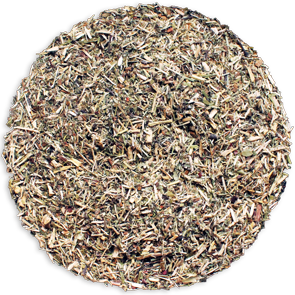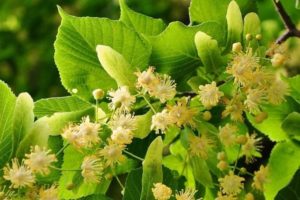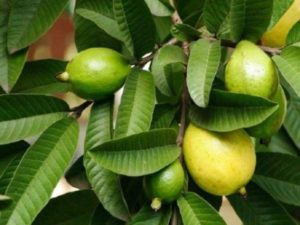Actúa como auxiliar en el agotamiento mental, tensión e insomnio.

Contiene: Valeriana Valeriana officinalis (Utilizada por su acción tranquilizante, relajante e inductora del sueño, es un agente sedante que relaja el sistema nervioso y el cerebro, por lo que se recomienda para los trastornos del sueño y para aliviar el estrés y la ansiedad. Proporciona un estado de relajación y bienestar), Pasiflora Passiflora incarnata (Gracias a sus propiedades ansiolíticas, sedantes e hipnóticas, es útil para los problemas de insomnio recurrente, estados leves de ansiedad, sensaciones de angustia por problemas emocionales, situaciones de estrés, y nervios), Damiana de California Turnera diffusa (Estimulante del sistema nervioso central, combate estados de apatía, desgana y falta de motivación y ayuda en situaciones de estrés), Tila Tilia cordata (Actúa como relajante a nivel del sistema nervioso, indicada en casos de estrés, ansiedad, intranquilidad, nerviosismo e insomnio, ayuda a conciliar el sueño), Zapote Casimiroa edulis (Sirve para tratar la ansiedad, insomnio y dormir profundamente), Azahar Citrus sinensis (Tranquiliza los nervios, hace dormir plácidamente, ayuda en los procesos depresivos) y Manita Pentadactylon (dolor de cabeza, mareos y para calmar los nervios).
Tomar 1 o 2 tazas al día preferentemente por la tarde noche. Este producto no debe ser sustituido por ninguna dieta variada ni tampoco sustituye a ningún medicamento.

Siempre es bueno estar informado al 100% y consultar con tu médico de confianza antes de tomar cualquier suplemento.
Producto 100% natural, su uso está destinado al consumo como alimento.
EL CONSUMO DE ESTE PRODUCTO ES RESPONSABILIDAD DE QUIEN LO RECOMIENDA Y DE QUIEN LO USA
REFERENCIAS
1)Valerian for sleep: a systematic review and meta-analysis.
Miroddi M, Calapai G, Navarra M, Minciullo PL, Gangemi S.J Ethnopharmacol. 2013 Dec 12;150(3):791-804. doi: 10.1016/j.jep.2013.09.047. Epub 2013 Oct 17.PMID: 24140586 Review.
ETHNOPHARMACOLOGICAL RELEVANCE: The genus Passiflora incarnata Linnaeus comprises approximately 520 species belonging to the Passifloraceae family. …In conclusion, the results of this review suggest that new clinical trials should be conducted using a more rigorou …
Szewczyk K, Zidorn C.J Ethnopharmacol. 2014 Mar 28;152(3):424-43. doi: 10.1016/j.jep.2014.01.019. Epub 2014 Jan 24.PMID: 24468305 Review.
ETHNOPHARMACOLOGICAL RELEVANCE: Half a dozen of the currently accepted 135 Turnera species are used in traditional medicine, most notably Turnera diffusa Willd. ex Schult. which is one of the most highly appreciated plant aphrodisiacs. …A notable exception …
4) Nutlets of Tilia cordata Mill. and Tilia platyphyllos Scop. – Source of bioactive compounds.
Siger A, Antkowiak W, Dwiecki K, Rokosik E, Rudzińska M.Food Chem. 2021 Jun 1;346:128888. doi: 10.1016/j.foodchem.2020.128888. Epub 2020 Dec 29.PMID: 33385911
Additionally squalene was detected at 806 and 607 mg/100 g, respectively, for Tilia cordata and T.platyphyllos. It was found that linden seed oil contains tocopherols (93%) and tocotrienols (7%). In terms of tocochromanol contents this oil is surpassed only by wheat …
5) Chemical Profile and Biological Activity of Casimiroa Edulis Non-Edible Fruit`s Parts.
Elkady WM, Ibrahim EA, Gonaid MH, El Baz FK.Adv Pharm Bull. 2017 Dec;7(4):655-660. doi: 10.15171/apb.2017.079. Epub 2017 Dec 31.PMID: 29399557 Free PMC article.
Purpose: the non-edible fruit parts of Casimiroa edulis Llave et were evaluated for their active constituents and their potential as antioxidants, anti-inflammatory and antitumor activity. Methods: Fruits peel (FP) and seeds kernel (SK) of Casimiroa edulis …
6) Chemistry and Pharmacology of Citrus sinensis.
Favela-Hernández JM, González-Santiago O, Ramírez-Cabrera MA, Esquivel-Ferriño PC, Camacho-Corona Mdel R.Molecules. 2016 Feb 22;21(2):247. doi: 10.3390/molecules21020247.PMID: 26907240 Free PMC article. Review.
The present study is a review of the chemistry and pharmacology of Citrus sinensis. This review reveals the therapeutic potential of C. sinensis as a source of natural compounds with important activities that are beneficial for human health that could be used …
Calzada F, Juárez T, García-Hernández N, Valdes M, Ávila O, Mulia LY, Velázquez C.Pharmacogn Mag. 2017 Apr-Jun;13(50):240-244. doi: 10.4103/0973-1296.204564. Epub 2017 Apr 18.PMID: 28539715 Free PMC article.
BACKGROUND: Chiranthodendron pentadactylon Larreat. (Sterculiaceae) is a Mexican plant used in traditional medicine for the treatment of heart disease symptoms and infectious diarrhea. …CONCLUSION: Epicatechin and tiliroside were the flavonoids responsible for antimicrob …



